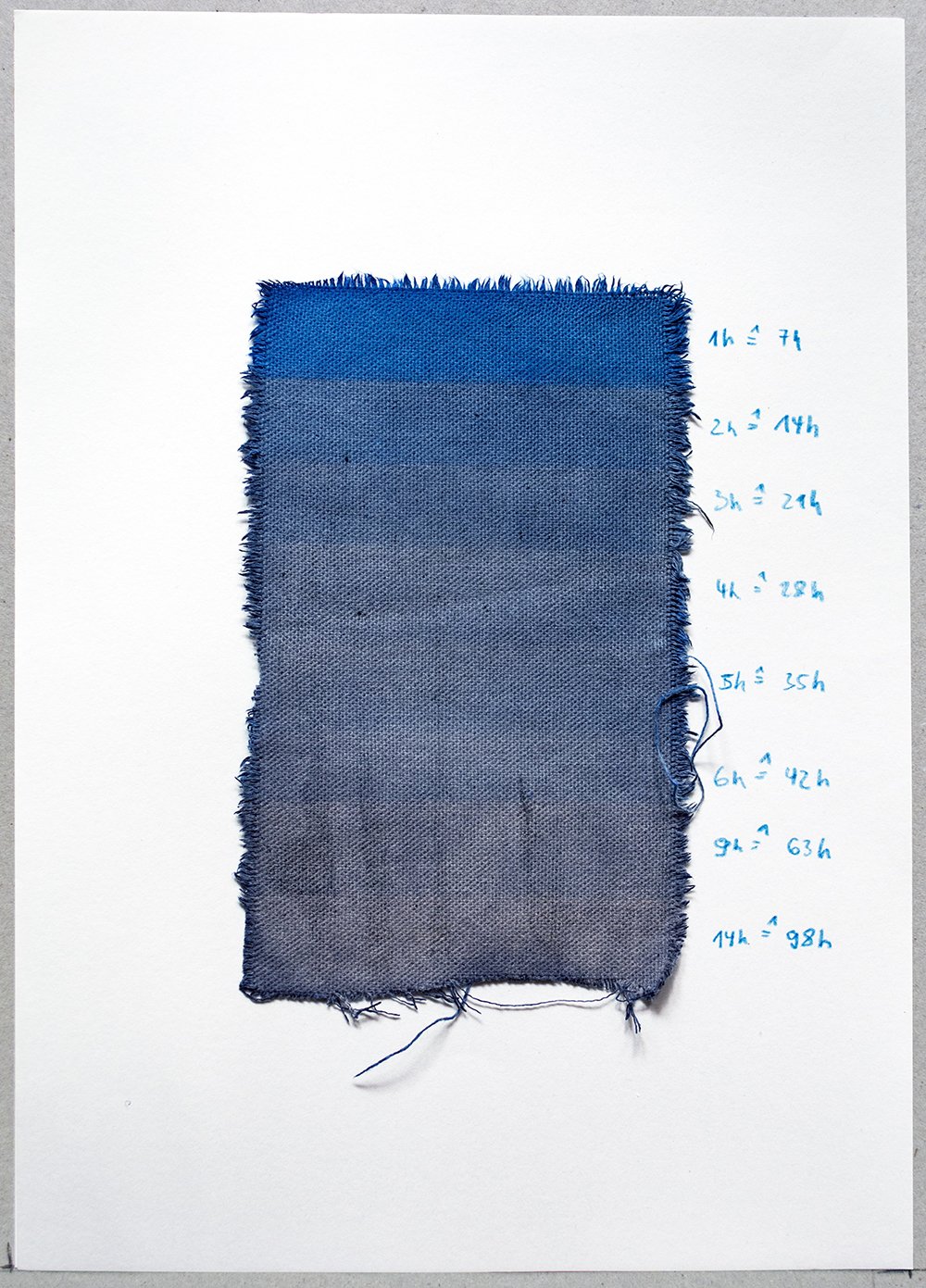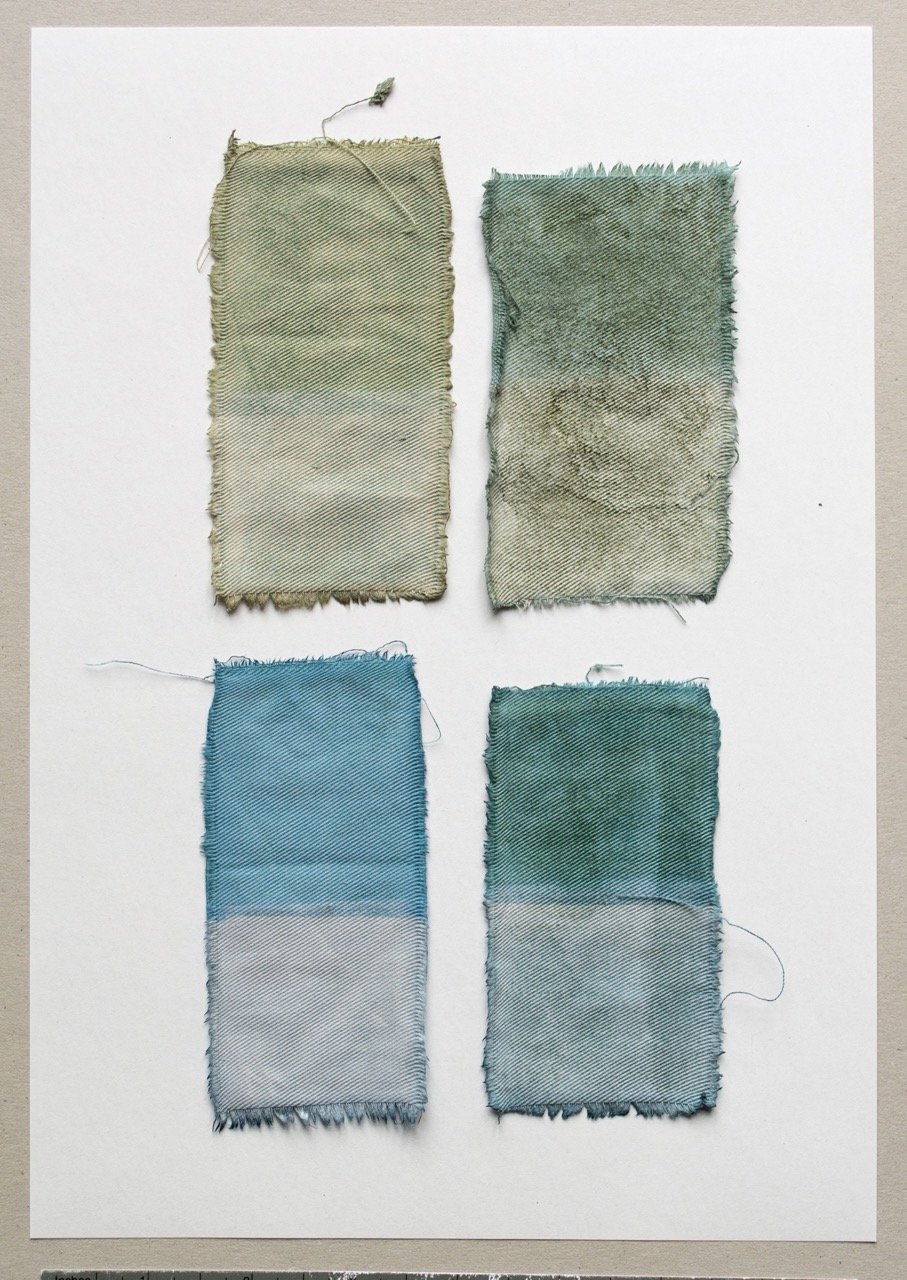THE FADING
Climate Emergent Vulnerability- Transformation in Relation
Opposed to the artificial rainbow aesthetics of global warming visualisations, the ghostly images of the desaturated dyes inform us in a different way. The relationship of UV light and matter is at play which causes the colouring agent to withdraw. Radiation of UV-rays impacts any organism and leads to transformation. We lend the term 'Retiring Colour' (Noyes Vanderpoel: 38) to describe this process of retreating. For one to decide to retire one might be exhausted, ‘burnt-out’.
When the originally dyed surface slowly desaturates, the temporary and fleeting notion of matter or beings undergoing harsh environmental conditions is witnessed. Yet, only an informed gaze can tell of the implicit violence of this relationality or the exercised control of the UV-light simulation chamber. Therefore, we understand the fading not as a default of material but rather as a shared climate emergent vulnerability. The material specificity of colour reaches meaning through its indexicality. And we understand that the sensing body (human or non-human) never exists externally from its surrounding.
Caitlin DeSilvey writes in ‘Curated Decay’: ‘’We speak of vulnerable places and things needing protection, conservation, and preservation. (…) But what happens if we choose not to intervene? Can we uncouple the work of memory from the burden of material stasis?‘’ (DeSilvey: 4-5). These are the questions we similarly pose ourselves, since when it comes to colouring practices, lightfastness was always one of the main criteria determining the value of a colour. To work with changing colouring agents requires acceptance and eventually to look differently at the notion of loss or disappearance. And to ask ourselves: ‘’What possibilities emerge when change is embraced rather than resisted?’’ (DeSilvey: 4-5).
In the end, to work with constantly transforming organic matter, and especially colour and their ecologies, is also exactly that: a proposition as practice that rejects taxonomic categories and classification because it puts in focus their ramified impossibilities.
#Arthrospira platensis (Phycocyanin)
Phycocyanin is a light-harvesting pigment-protein complex found in a cyanobacteria with the name Arthrospira platensis, commonly known under Spirulina for its curly shape when looked at under a microscope. Its appearance is a seldom and fascinating saturated blue. The cyanobacteria found in underwater habitats, often in lakes or oceans, feed off what we call contamination of nitrogen, and phosphorus - often derived from anthropogenic activities.
#Collective Colour Archives - Microalgae and Cyanobacteria Dyes
The microalgae Haematoccocus pluvialis, Dunaliella salina, Chlorella vulgaris and the cyanobacterium Artrospira platensis produce the biological pigments Chlorophyll b, Chlorophyll a, Astaxanthin, ß- Carotene and Phycocyanin. Those biological pigments as dyes have the capacity to react to UV-light and record the encounter through transforming. The palette created can be understood as one of a sunburnt Earth.
#Collective Colour Archives - Phycocyanin/ Isatis Tinctoria (European Indigo)
Two ‘organic and grown’ blues, Phycocyanin from the cyanobacteria Arthrospira platensis and Indigo from the plant Isatis Tinctoria, applied on small wooden boards with different or no primers, are observed over a timespan of 7 - 8 weeks. They were placed in chosen spots around Aachen, and their transformation has been recorded. Some woods spent their time outside in sunny or shady locations, some were placed inside behind window glass. The outside exposure to UV-radiation, as well as temperature and moisture variances had been more intense, so both blues went through visible changes over the weeks.
















